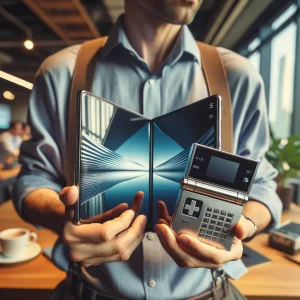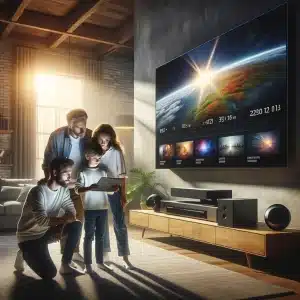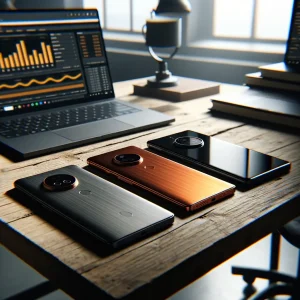
Samsung Galaxy Z Trifold: The Next-Gen Pocket PC
Hands-on with the Samsung Galaxy Z Trifold foldable smartphone: design, Dex desktop mode, pricing, and why this triple-fold phone redefines the pocket PC.

Bitcoin Volatility Spikes Before $23B Options Expiry
Explore rising Bitcoin volatility, the $23B options expiry, 2025 price forecasts, and strategies to navigate the crypto market with confidence.

Electric Cars to Avoid in 2026: 6 EVs Losing Value
Discover 6 electric cars to avoid in 2026—data-backed analysis of reliability problems, resale value crashes, and tips for choosing a trouble-free EV.

2026 TVs: Why Waiting Pays Off – Huge Upgrades Ahead
Discover why 2026 TVs with RGB Mini LED, brighter OLED and AI processors will outshine today’s sets. Learn the upgrades before you buy – get insider tips now.

OnePlus 15 vs iPhone 17 Pro Max vs Galaxy S25 Ultra
Compare OnePlus 15, iPhone 17 Pro Max, and Samsung Galaxy S25 Ultra in performance, design, camera, and battery to decide which flagship smartphone suits you best.

Bitcoin Price Prediction: Why a Major Drop Looms
Bitcoin price prediction points to a volatile week ahead. Discover key levels, technical analysis & trading tactics before the next big move.

Travel Trends 2026: AI, Biometrics & Green Journeys
Explore the top travel trends 2026—AI trip planning, digital nomad visas, biometric airport screening, and eco-friendly travel—so you can stay ahead.

Cheapest Electric Cars & SUVs for 2024: Top 6 Budget EVs
Discover the cheapest electric cars and SUVs for 2024, with prices, range, tax credits and buying tips. Find your perfect affordable EV in our expert guide.

Smart Glasses 2025: Ranking the 6 Best Pairs to Buy
Discover the top 6 smart glasses 2025 models ranked for brightness, performance and price. Compare features, specs and who each pair is perfect for.
Pixel December 2025 Update: Full Patch Notes & Fixes
Explore every fix in the Pixel December 2025 update, from battery and Wi-Fi improvements to camera tweaks. Stay ahead with our detailed breakdown.

Gold Price Forecast 2024: Blow-Off Top & Market Crash
Our gold price forecast 2024 tackles a looming blow-off top, bitcoin crash risk, and global recession outlook—protect your portfolio today.

Luxury Travel Tech 2025: Hyper-Personalized Journeys
Discover luxury travel trends 2025—AI-powered personalization, emotion AI, smart hotels, and ethical data practices shaping tomorrow’s most exclusive trips.

Hyundai IONIQ 9 Review: 7-Seat Electric SUV Tested
Comprehensive Hyundai IONIQ 9 review examining range, interior space, performance and ultra-fast charging of the big 7-seat electric SUV.

Humanoid Robot Revolution: Figure 3 Stuns the Internet
See how the new humanoid robot Figure 3, backed by OpenAI and Nvidia, is redefining home chores and trillion-dollar industries in this detailed breakdown.

Samsung Transparent Phone ‘Galaxy Glass’ Changes Mobile Tech
Samsung transparent phone Galaxy Glass aims to dethrone the iPhone, bringing a fully transparent smartphone with next-gen OLED display and hidden components.

Bitcoin Price Prediction: Huge Weekly Pattern Warning
Bitcoin price prediction turns critical as a massive weekly head-and-shoulders pattern forms. Learn the key levels, sentiment shifts and trading tactics you need now.

2026 World Cup Economic Impact: Dallas-Fort Worth Outlook
Learn the 2026 World Cup economic impact on Dallas-Fort Worth: tourism surge, SME gains & infrastructure upgrades clearly explained for sustainable growth.

First Ferrari Electric Car: Design, Specs & Price
Discover the design, specs, price and release timeline of the first Ferrari electric car. Get expert insight into Ferrari EV performance and market impact.

Apple Watch Ultra 3 vs Garmin: 30-Day Athlete Review
After 7 years on Garmin, we tested the Apple Watch Ultra 3 for 30 days across running, lifting and Muay Thai. Discover battery life, heart rate accuracy and real-world pros & cons.

Top 5 Best Free AI Apps for iPhone & Android (2024)
Discover the 5 best free AI apps for iPhone and Android—photo editing, image generation, 3D scanning, chatbots & text-to-speech. Upgrade your phone today.
